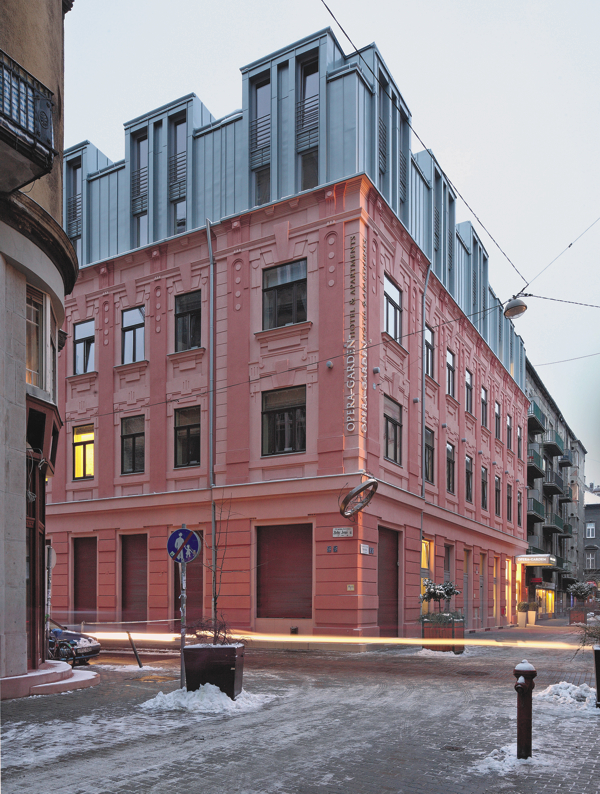Civil Respect, Courtesy and Prosperity
Hotel in Haj├│s Promenade

The inner districts of Pest have undergone a transformation since the change of the political system which hardly ever strikes us due to the lack of spectacular changes in our architectural environment. The number of inhabitants in Ter├®zv├Īros has dropped by one third in the past two decades. The decrease of population typically happened within the apartments as families with children wish to get away from here, the old are left alone, or the urban young people taking their place open up apartments divided long ago.
At better places, however, whole buildings have been deserted to be recently opened again as office block for rent, bank centres or hotels. In one of the buildings in Haj├│s Street, now a pedestrian zone, Andr├Īs Halmos architecture realized a programme which is characteristic of transformations taking place in the Inner City and yet unique. The structure had to be converted into a hotel primarily to function as accommodation for guests from abroad coming here to the dental surgery of the client. Besides comfort and tranquillity discretion was the priority over to representativity and the cultivation of communal relations.

The prototype must have been a better-quality tenement house rather than a turn-of-the-century hotel. The tight cortile ŌĆō the type that can be found in large numbers in Ter├®zv├Īros especially on tiny corner sites ŌĆō turns even narrower tighter after adding another storey and a lift to the existing structure. Some of the apartments also are exposed to the typical curses of tenement houses in Pest as they have only one window facing the side-corridor. The spaces are the size of a room and corridors run in a zigzagging way: those once familiar with blocks of flats with an outside corridors in Pest would also feel at home in Hotel Opera Garden. Besides architects, Csilla S├Īfr├Īny and Vir├Īg V├Čr├Čs interior designers are to be praised for the way how stuccos and wrought-iron railings salvaged from turn-of-the-century Viennese Art Nouveau joined by contemporary precious materials and American interferences refine into into a late-millennium ŌĆ×Art Deco of PestŌĆØ which has never existed.
Julianna Szab├│



├ēp├Łt├®sz tervez├Ą / architect: Halmos Andr├Īs
Bels┼æ├®p├Łt├®szet / interior design: V├Čr├Čs Vir├Īg
Statika / structure: Halmos Andr├Īs, Fekete Bal├Īzs
├ēp├Łt├®sz munkat├Īrsak / fellow architects: N├Īray Katalin, T├│th Barbara, Palotay Gerg┼æ
G├®p├®szet / installation: Csan├Īd B├Īlint
Elektromos tervez├®s / electrical engineering: Halmos Imre
Konyhatechnol├│gia / kitchen technology: R├Ītonyi ├ürp├Īd
